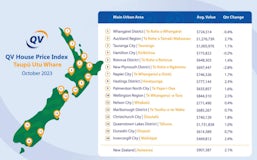Making $500K profit in four months, pre-Christmas mortgage rates movement, and a $38M K.O. bailout.
Too long; didn't read? Here's this week's TLDRs...
The state of mortgage debt in NZ
Read the article
Will the RBNZ raise the OCR again next year?
Read the article
Mortgage arrears have increased by 25%
Read the article
Tony Alexander on pre-Christmas mortgage rates
Read the article
Some FHBs stuck between a rock and a hard place
Read the article
Tony Alexander: Should first home buyers be worried about property investors?
Read the article
Quick report from Barfoot and Thompson
Read the article
The figures suggest a subdued recovery
Read the article
Auckland’s apartment market takes a dive
Read the article
$500,000 profit via a 4-month flip
Read the article
Homeowners double their 2014 purchase price
Read the article
The infrastructure dilemma, Part 1
Read the article
The value of new building work is on the decline
Read the article
Documents reveal $37.8M bailout from KO
Read the article
Tenant left with damages bill despite not being responsible
Read the article



